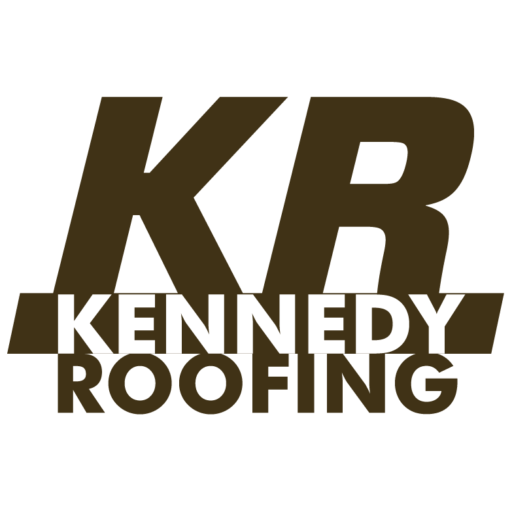Flat roofing in West Central Florida
Flat roofs generally are the most cost-effective solutions for commercial buildings such as shopping malls, warehouses, department stores and manufacturing plants, as well as residential condominiums, apartment buildings and even contemporary-style homes.
While it is easy to put a sloped roof on a relatively small building, it wouldn’t scale well for large commercial structures where the roof would rise a hundred feet or more into the air. This is why most industrial and commercial buildings in Florida and elsewhere have flat roofs. We offer many types of roofing systems to meet your specifications and needs.
Despite the name, a flat roof should actually have a slope of 10 percent to help alleviate ponding water and the development of fungus and algae, which can put a strain – and a stain – on the the roofing structure.
But because flat roofs don’t have a large pitch and do not drain as well, they have a relatively short lifespan of about 10 years, but can last longer (sometimes up to 30 years) with good installation and care. Flat roofs require regular inspections and maintenance such as re-coating to ward off potential leaks. Since they are more prone to leaks, they may require higher insurance premiums – and some insurance carriers won’t even cover them.
FINANCING AVAILABLE
Easy payment options. No credit check. No prepayment penalties.
Senior and military discounts available.
To keep monthly payments low, you can finance for up to 25 years
Types of flat roofs
There are several types of flat roofs available. We can help you determine which is best for your particlair structure, budget and needs.
Built-Up Roof (BUR)
This is probably the most common and least expensive version of flat roofing. This traditional tar-and-gravel roof typically consists of three or more plies of waterproof material alternated with hot tar and topped with a layer of gravel. This gravel is not only an excellent fire retardant, it also makes for an attractive look, which is important if you have windows that look out over your flat roof. This type of roof is very heavy and may require joists in your roof to be strengthened, which can add to the cost. The gravel can also clog gutters and scuppers over time and it is often hard to locate the source of leaks. Because of the fumes generated by the hot tar, it is recommended that your building remain unoccupied during installation.
Modified Bitumen
This is a single-ply rolled roof with a mineral-based wear surface. Traditional torch-down systems involve heating the adhesive as the material is unrolled, but now there are newer peel-and-stick systems that are safer and easier to install. This is an environmentally friendly option, as the light-colored mineral surface reflects the sun, deflects the heat and cuts your energy bills. The torch-down application is a fire hazard and not recommended for occupied buildings. It’s also not as scuff- or tear-resistant as rubber-membrane roofs, so it cannot tolerate much foot traffic after it is installed.
Rubber Membrane
Rubber membrane roofs, also called EPDM (ethylene propylene diene monomer) are durable and engineered to resist damage from sunlight. While the material is highly resistant to scuffs and tears, it is more vulnerable to punctures than other roofing options. However, leaks are easy to patch. The standard black material absorbs heat, while light-colored coatings recommended for warm climates add 30% or more to the cost. Even the black version, though, costs more than the BUR or modified bitumen versions. It’s also more vulnerable to punctures than other choices.
PVC
This option is very reflective and durable, and can resist water ponding. It’s three main benefits are very comparable to number 5 on the list, spray-applied roof coatings. One negative associated with this option is that it is applied in rolls, giving it seams that can lead to leaks. It will not last as long as one of seamless roofing system options.
Silicone roof coatings
This is sprayed on in a seamless application and can be applied over most substrates. It is highly reflective to help reduce energy costs and it resists ponding water. However, it is one of the more expensive flat roof options.
Common causes of flat roof leaks
A main reason for failure of these traditional roofs is ignorance or lack of maintenance where people or events cause the gravel to be moved or removed from the roof membrane, commonly called a built-up roof, thus exposing it to weather and sun. Cracking and blistering occurs and eventually water gets in.
Flat roofs tend to be sensitive to human traffic. Anything which produces a crack or puncture in the waterproofing membrane can quite readily lead to leaks. Flat roofs can fail, for example; when subsequent work is carried out on the roof, when new through-roof service pipes/cables are installed or when plant such as air conditioning units are installed. In trafficked areas, proper advisory/warning signs should be put up and walkways of rubber matting, wooden or plastic duck-boarding etc. should be installed to protect the roof membrane. On some membranes, even stone or concrete paving can be fitted.
Another common reason for failure of flat roofs is lack of drain maintenance where gravel, leaves and debris block water outlets (be they spigots, drains, downpipes or gutters). This causes a pressure head of water (the deeper the water, the greater the pressure) which can force more water into the smallest hole or crack. In colder climates, puddling water can freeze, breaking up the roof surface as the ice expands. It is therefore important to maintain your flat roof to avoid excessive repair.
The maintenance and repair of flat roofing
One problem with maintaining flat roofs is that if water does penetrate the barrier covering (be it traditional or a modern membrane), it can travel a long way before causing visible damage or leaking into a building where it can be seen. Thus, it is not easy to find the source of the leak in order to repair it. Once underlying roof decking is soaked, it often sags, creating more room for water to accumulate and further worsening the problem.
If a leak does occur on a flat roof, damage often goes unnoticed for considerable time as water penetrates and soaks the decking and any insulation and/or structure beneath. This can lead to expensive damage from the rot which often develops and if left can weaken the roof structure. There are health risks to people and animals breathing the mold spores: the severity of this health risk remains a debated point. While the insulation is wet, the “R” value is essentially destroyed. If dealing with an organic insulation, the most common solution is removing and replacing the damaged area. If the problem is detected early enough, the insulation may be saved by repairing the leak, but if it has progressed to creating a sunken area, it may be too late.
Count on the flat roof experts at Kennedy Construction Groups
Our professionals are ready to meet your flat roofing needs with quality materials and workmanship.



